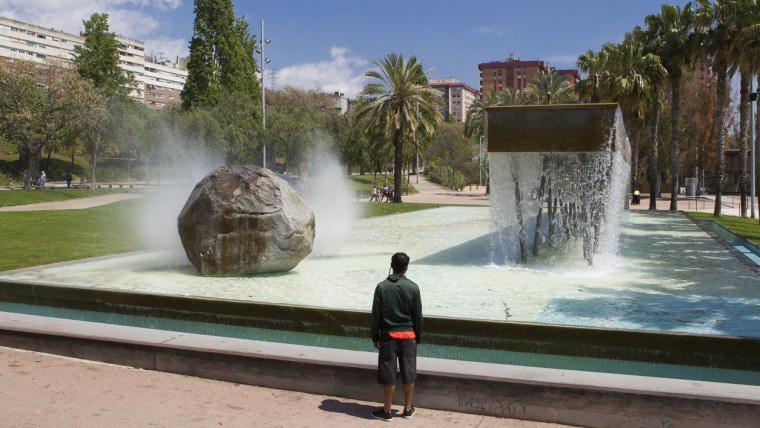
This green space, highly popular with local residents, is not just a park but also a thoroughfare and a square. That means it has lots of uses, which includes holding the weekly Tuesday market in the neighbourhood: Canyelles. Its luxuriant vegetation and a fountain of water, light and colour give it a special charm.
Carrer d’Antonio Machado, where the weekly neighbourhood market sets up its stalls, crosses the park from one end to the other. The sunniest part of the park is below this street. There is a large square (in fact, it is the Serra Martí Civic Centre roof) which turns into a large balcony over the Ronda de Dalt ring road.
Seen from here, the park resembles a large green and continuous rising meadow. The park entrance is very convenient: you can get there by lift, straight from the Canyelles metro station.

History
The park takes up the central part of the Canyelles estate and is a good example of restorative urban planning, as it improved the quality of the large area occupied by housing between Avinguda de la Guineueta Vella and Ronda de Dalt. It is named after the former Barcelona City Councillor, Josep Maria Serra i Martí.

Art and Architecture
The Font de Manuel de Falla, a fountain designed by Pedro Barragán (1994), has a set of light, water and sound that makes it a magic fountain. It is a large rectangular platform in an equally rectangular lake, with a longitudinal piece practically 20 metres above it over tubes that act as columns. Water cascades down from here, shoots up from the fountain jets and turns into vapour below and close to the large stones on one side of the lake.
In the middle of the park, on a large painted concrete pedestal, there stands a sculpture by Ignasi Farreras Casanovas: Alegrías (Joys, 1998). This sculptural piece, which expresses great movement, represents a flamenco dancer performing one of her twirls.
-
- Phone number
- Tel.: 010
-
- Accessibility
- Accessible for people with physical disabilities
-
- Titularity
- Public center
- Address:
- C Miguel Hernández, 16
- Districte:
- Nou Barris
- Neighborhood:
- Canyelles
- City:
- Barcelona

